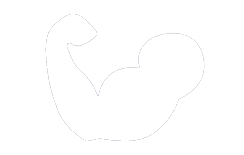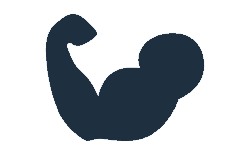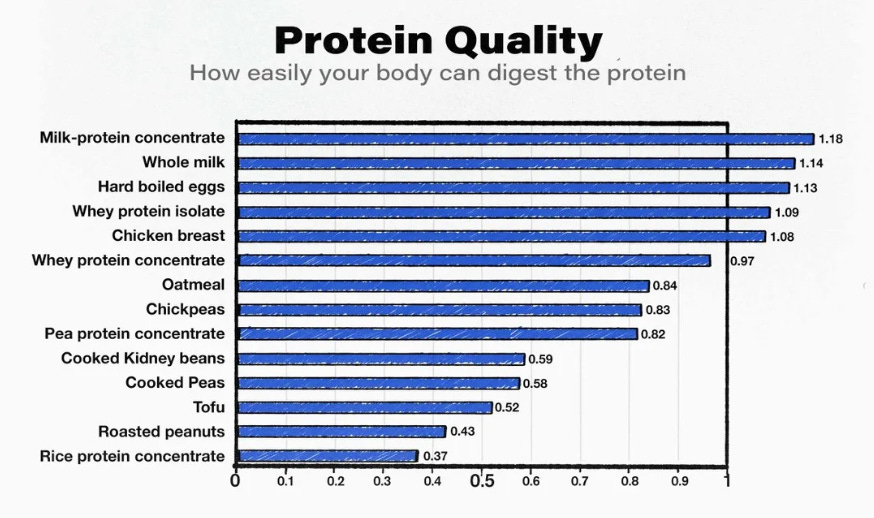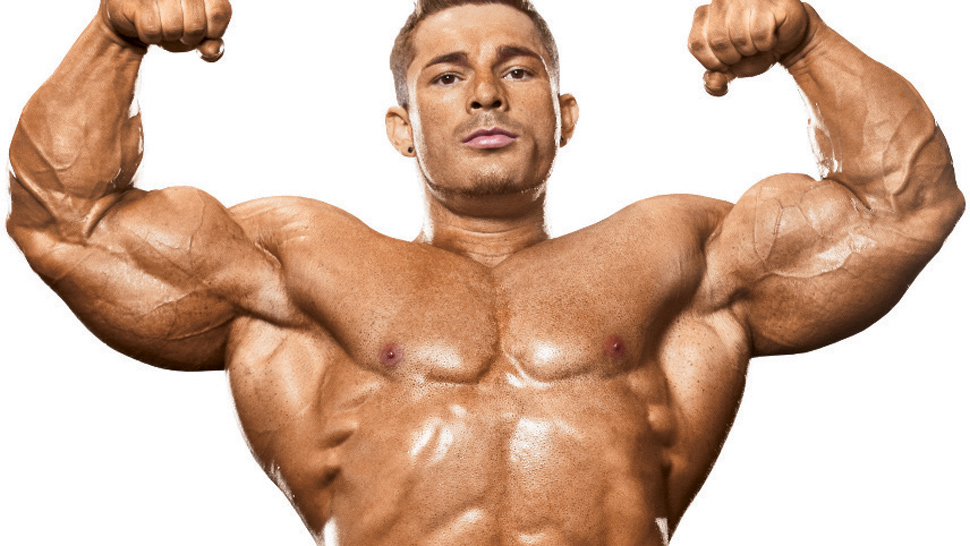· weightlifting · 11 min read
Goblet Squat VS Front Squat: Which Is Better?
Curious about the differences between goblet squats and front squats? Wondering which one is better for building muscle, improving strength, or preventing injuries?
Curious about the differences between goblet squats and front squats? Wondering which one is better for building muscle, improving strength, or preventing injuries? In this article, we’ll break down the key distinctions between these two popular squat variations.
From the equipment used to the muscle groups targeted, we’ll explore all aspects of goblet squats and front squats. Plus, we’ll provide tips on how to perform each exercise correctly and highlight common mistakes to avoid.
Whether you’re a beginner or a fitness enthusiast looking to enhance your workout routine, this article has got you covered. So, grab your weights and get ready to squat your way to better fitness!
What Are Goblet Squats And Front Squats?
Goblet squats and front squats are two popular variations of the squat exercise that target the lower body and core muscles.
While both exercises are effective for building lower body strength and improving overall stability, they have distinct differences in terms of technique and muscle engagement. Goblet squats involve holding a weight close to the chest while performing a squat, which helps with maintaining an upright posture and engaging the core. On the other hand, front squats require the barbell to be positioned in front of the body, placing more emphasis on the quadriceps and upper back muscles. Both exercises can be beneficial for improving squat form and developing strength, but they offer slightly different challenges and benefits.
What Are The Differences Between Goblet Squats And Front Squats?
When comparing goblet squats and front squats, key distinctions arise in terms of equipment used, muscle groups targeted, difficulty level, range of motion, and grip placement.
- Goblet squats typically involve the use of a single kettlebell held close to the chest, making them accessible to beginners and allowing for a comfortable grip placement.
- In contrast, front squats require a barbell positioned in front of the body, targeting the front deltoids and upper back more intensely.
In terms of muscle engagement, goblet squats primarily work the quads, glutes, and core due to the upright position enforced by holding the weight close, whereas front squats engage the core, quadriceps, and back muscles due to the forward-leaning position and the need to keep the barbell stabilized on the shoulders.
Equipment Used
The choice of equipment sets goblet squats and front squats apart, with goblet squats typically performed using a kettlebell while front squats involve a barbell for resistance training.
In goblet squats, the use of a kettlebell allows for a more comfortable grip due to its compact shape and centered weight distribution, making it ideal for beginners or individuals focusing on improving their squat form.
On the other hand, front squats with a barbell place more emphasis on upper body strength and core stability, requiring proper shoulder mobility and wrist flexibility to maintain an upright posture during the movement.
Both variations provide effective resistance training for targeting the quadriceps, hamstrings, glutes, and core muscles, contributing to overall squat performance and strength gains.
Muscle Groups Targeted
Both goblet squats and front squats engage a similar set of muscles, including the quadriceps, glutes, hamstrings, calves, and core muscles to foster stability and strength during the exercises.
These compound movements not only target major muscle groups like the quadriceps to aid in knee extension and the glutes for hip extension but also work the hamstrings for knee flexion and the calves for ankle plantar flexion.
Engaging the core muscles during these squats is crucial for maintaining an upright posture and stabilizing the spine during the movements, promoting overall muscle balance and strength development throughout the lower body and core region.
Difficulty Level
In terms of difficulty, goblet squats are generally considered more beginner-friendly due to their balance and resistance level, while front squats require a higher level of body positioning and stability.
Goblet squats, being performed with a single dumbbell held close to the chest, offer a more straightforward approach to maintaining balance and controlling the movement. The weight being held in front of the body allows for better stability and helps in keeping the torso upright throughout the exercise.
On the other hand, front squats involve holding a barbell across the front of the shoulders, demanding a more advanced level of body positioning to prevent the weight from pulling the upper body forward. This increased challenge of maintaining an upright posture greatly impacts the perceived difficulty of the exercise.
Range Of Motion
The range of motion in goblet squats and front squats differs based on squat depth and muscle activation, with front squats often requiring a greater depth for optimal muscle engagement.
Goblet squats are advantageous for those looking to emphasize their quadriceps while maintaining an upright torso position, making them excellent for beginners or individuals with mobility limitations. On the other hand, front squats target the lower body, especially the quadriceps and glutes, with an added emphasis on core stability due to the front-loaded weight. This variation forces the body to work harder to maintain an upright position, enhancing overall strength and balance. Understanding these differences can help individuals tailor their workout routines to suit their specific fitness goals.
Grip Placement
Grip placement plays a crucial role in goblet squats and front squats, influencing body mechanics and weight distribution to maintain proper form and stability throughout the movements.
The way you hold the weight in these squat variations can significantly impact your overall performance. By positioning your hands correctly on the weight, you are able to better control the movement and engage the targeted muscle groups more effectively.
Proper grip placement helps in distributing the load evenly across your body, reducing strain on certain areas while maximizing muscle activation. This ensures that you maintain a strong and stable posture, allowing for efficient movement patterns that optimize the benefits of the exercise.
Which Squat Is Better For Building Muscle?
When aiming for muscle growth, both goblet squats and front squats can be effective options, as they promote muscle recruitment and activation across the lower body and core.
Goblet squats are particularly beneficial for beginners or those with limited equipment access, as they are easier to perform with proper technique. On the other hand, front squats are known for their ability to target the quadriceps more intensely due to the barbell position. To maximize muscle development, it is crucial to incorporate progressive overload techniques, gradually increasing the weight or resistance used during these exercises. This progressive approach challenges the muscles, forcing them to adapt and grow stronger over time, leading to significant gains in muscle mass and strength.
Which Squat Is Better For Improving Strength?
For strength training and power development, front squats are often favored over goblet squats due to their higher resistance levels and emphasis on core stability and strength.
Front squats specifically target the quadriceps, hamstrings, glutes, and lower back, resulting in improved overall lower body strength. The challenge of maintaining an upright torso position during front squats forces the core muscles to engage, leading to better stability and postural control. By mastering proper form, individuals can minimize the risk of injury and ensure maximum muscle activation, enabling them to push through strength plateaus and enhance athletic performance. Incorporating front squats into a well-rounded strength training program can yield significant gains in both muscle size and power output.
Which Squat Is Better For Injury Prevention?
In terms of injury prevention, goblet squats are often recommended for beginners and individuals with movement limitations due to their focus on control, stability, and proper movement mechanics.
These aspects play a crucial role in reducing the risk of injuries, especially for those new to weightlifting. By mastering the technique of goblet squats, individuals can enhance their body awareness and develop foundational strength that translates into better performance while minimizing the likelihood of strains or sprains.
The emphasis on maintaining an upright posture and engaging the core muscles during goblet squats helps in improving overall stability and reinforcing proper movement patterns, laying a solid foundation for more advanced squat variations like front squats.
Which Squat Is Better For Beginners?
For beginners, goblet squats are an excellent starting point to master squatting techniques, as they allow for easier exercise modification and emphasize proper form and posture alignment.
This exercise is particularly beneficial for those who are new to squatting movements, as holding a weight close to the chest encourages a more upright torso position. By drawing attention to the alignment of the spine and engaging the core muscles, goblet squats help beginners develop the foundational strength and stability needed for more advanced squat variations. The simplicity of the movement reduces the risk of injury and enables individuals to focus on building strength in the lower body while refining their technique.
How To Perform Goblet Squats?
Executing proper goblet squats involves mastering body mechanics, minimizing joint stress, and maintaining proper posture alignment throughout the movement for optimal muscle activation and growth.
To begin, stand with your feet shoulder-width apart, holding a kettlebell or dumbbell close to your chest with both hands, elbows pointing down. Engage your core and keep your chest up as you lower your body by bending your knees and pushing your hips back. Ensure that your knees track over your toes without collapsing inward. As you descend, aim to bring your thighs parallel to the ground. Push through your heels to return to the starting position, maintaining a strong core and upright posture.
How To Perform Front Squats?
Front squats demand precise technique, exceptional balance, and muscle endurance to execute the movement effectively and target the intended muscle groups for strength and size gains.
One of the key steps to mastering front squats is ensuring proper positioning of the barbell across the front shoulders, with elbows high to create a sturdy shelf. This positioning not only helps maintain an upright torso but also ensures that the weight is evenly distributed for greater stability. Another crucial aspect is to engage the core muscles throughout the movement to support the spine and maintain proper alignment. Focusing on controlled descent and explosive drive through the heels can help maximize muscle recruitment and power output during the lift.
What Are The Common Mistakes To Avoid When Performing Goblet Squats And Front Squats?
Common mistakes during goblet squats and front squats include improper posture alignment, lack of corrective exercises, and inadequate focus on form correction, hindering optimal muscle engagement and growth.
Improper posture alignment during these squat variations can put excessive strain on the lower back and knees, leading to potential injuries. Without incorporating corrective exercises into your routine, existing muscular imbalances may worsen over time, impeding overall progress.
It is crucial to pay attention to small form adjustments, such as keeping the chest up and maintaining a neutral spine, to ensure effective muscle activation and reduce the risk of strains or discomfort during these compound movements.
Which Squat Is Better For Overall Fitness?
Both goblet squats and front squats offer valuable benefits for overall fitness, incorporating functional training elements and versatility in workout routines to enhance muscle balance and strength development.
Goblet squats, performed by holding a single dumbbell or kettlebell close to the chest, engage the core, glutes, quads, and hamstrings, promoting stability and proper movement patterns.
On the other hand, front squats place greater emphasis on the quadriceps and upper back, enhancing postural strength and mobility.
These exercises not only build lower body strength but also improve flexibility and coordination, making them suitable for individuals of all fitness levels. Incorporating both goblet squats and front squats into a workout routine adds variety and challenges different muscle groups, leading to well-rounded fitness outcomes.
Frequently Asked Questions
What is the difference between a goblet squat and a front squat?
The main difference between a goblet squat and a front squat is the positioning of the weight. In a goblet squat, the weight is held at chest level with both hands, while in a front squat, the barbell is held in front of the neck with an overhand grip.
Which squat variation is better for beginners, goblet squat or front squat?
For beginners, the goblet squat is generally recommended as it is easier to learn and requires less mobility. The weight placement also helps to promote good squat form.
Are goblet squats more effective for building muscle than front squats?
Both goblet squats and front squats are effective for building muscle. However, front squats place more emphasis on the quads, while goblet squats also target the core and upper back muscles.
Is one squat variation better for targeting specific muscle groups?
Yes, the front squat primarily targets the quads, while the goblet squat engages the core, upper back, and glutes in addition to the quads.
Do I need special equipment to perform goblet squats or front squats?
No, both goblet squats and front squats can be performed with just a dumbbell or kettlebell. However, for front squats, you will need access to a barbell and squat rack.
Can I incorporate both goblet squats and front squats into my workout routine?
Absolutely! In fact, incorporating both variations can help to target different muscle groups and prevent muscle imbalances. Just be sure to use proper form and gradually increase weight to avoid injury.






